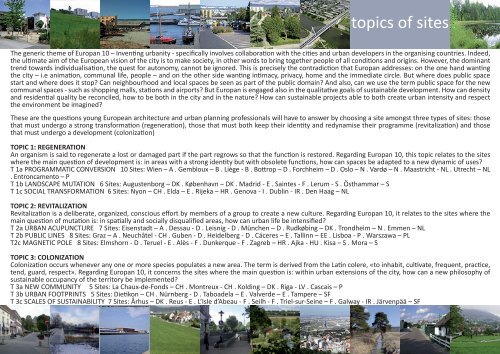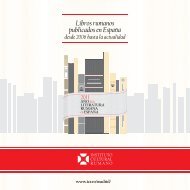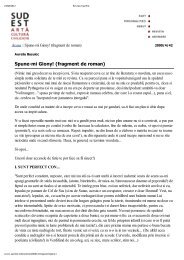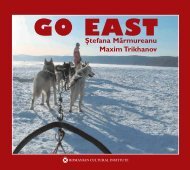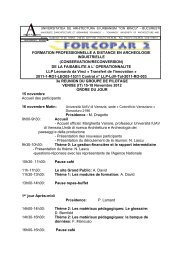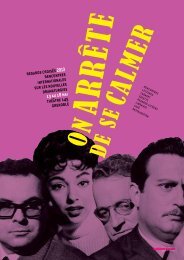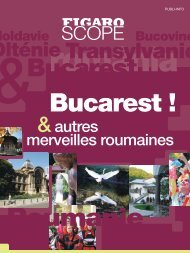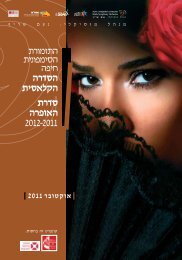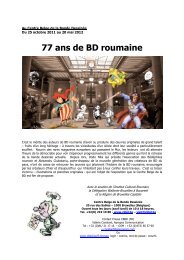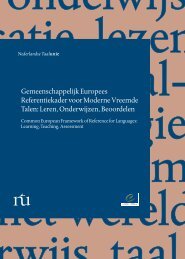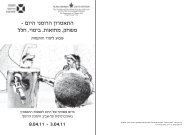europan 10
europan 10
europan 10
Create successful ePaper yourself
Turn your PDF publications into a flip-book with our unique Google optimized e-Paper software.
topics of sites<br />
The generic theme of Europan <strong>10</strong> – Inventing urbanity - specifically involves collaboration with the cities and urban developers in the organising countries. Indeed,<br />
the ultimate aim of the European vision of the city is to make society, in other words to bring together people of all conditions and origins. However, the dominant<br />
trend towards individualisation, the quest for autonomy, cannot be ignored. This is precisely the contradiction that Europan addresses: on the one hand wanting<br />
the city – i.e animation, communal life, people – and on the other side wanting intimacy, privacy, home and the immediate circle. But where does public space<br />
start and where does it stop? Can neighbourhood and local spaces be seen as part of the public domain? And also, can we use the term public space for the new<br />
communal spaces - such as shopping malls, stations and airports? But Europan is engaged also in the qualitative goals of sustainable development. How can density<br />
and residential quality be reconciled, how to be both in the city and in the nature? How can sustainable projects able to both create urban intensity and respect<br />
the environment be imagined?<br />
These are the questions young European architecture and urban planning professionals will have to answer by choosing a site amongst three types of sites: those<br />
that must undergo a strong transformation (regeneration), those that must both keep their identity and redynamise their programme (revitalization) and those<br />
that must undergo a development (colonization)<br />
TOPIC 1: REGENERATION<br />
An organism is said to regenerate a lost or damaged part if the part regrows so that the function is restored. Regarding Europan <strong>10</strong>, this topic relates to the sites<br />
where the main question of development is: in areas with a strong identity but with obsolete functions, how can spaces be adapted to a new dynamic of uses?<br />
T 1a PROGRAMMATIC CONVERSION <strong>10</strong> Sites: Wien – A . Gembloux – B . Liège - B . Bottrop – D . Forchheim – D . Oslo – N . Vardø – N . Maastricht - NL . Utrecht – NL<br />
. Entroncamento – P<br />
T 1b LANDSCAPE MUTATION 6 Sites: Augustenborg – DK . København – DK . Madrid - E . Saintes - F . Lerum - S . Östhammar – S<br />
T 1c SOCIAL TRANSFORMATION 6 Sites: Nyon – CH . Elda – E . Rijeka – HR . Genova - I . Dublin - IR . Den Haag – NL<br />
TOPIC 2: REVITALIZATION<br />
Revitalization is a deliberate, organized, conscious effort by members of a group to create a new culture. Regarding Europan <strong>10</strong>, it relates to the sites where the<br />
main question of mutation is: in spatially and socially disqualified areas, how can urban life be intensified?<br />
T 2a URBAN ACUPUNCTURE 7 Sites: Eisenstadt – A . Dessau - D . Leisnig - D . München – D . Rudkøbing – DK . Trondheim – N . Emmen – NL<br />
T 2b PUBLIC LINES 8 Sites: Graz – A . Neuchâtel - CH . Guben - D . Heidelberg - D . Cáceres – E . Tallinn – EE . Lisboa - P . Warszawa – PL<br />
T2c MAGNETIC POLE 8 Sites: Elmshorn - D . Teruel - E . Alès - F . Dunkerque - F . Zagreb – HR . Ajka - HU . Kisa – S . Mora – S<br />
TOPIC 3: COLONIZATION<br />
Colonization occurs whenever any one or more species populates a new area. The term is derived from the Latin colere, «to inhabit, cultivate, frequent, practice,<br />
tend, guard, respect». Regarding Europan <strong>10</strong>, it concerns the sites where the main question is: within urban extensions of the city, how can a new philosophy of<br />
sustainable occupancy of the territory be implemented?<br />
T 3a NEW COMMUNITY 5 Sites: La Chaux-de-Fonds – CH . Montreux - CH . Kolding – DK . Riga - LV . Cascais – P<br />
T 3b URBAN FOOTPRINTS 5 Sites: Dietikon – CH . Nürnberg - D . Taboadela – E . Valverde – E . Tampere – SF<br />
T 3c SCALES OF SUSTAINABILITY 7 Sites: Århus – DK . Reus - E . L’Isle d’Abeau - F . Seilh - F . Triel-sur-Seine – F . Galway - IR . Järvenpää – SF


